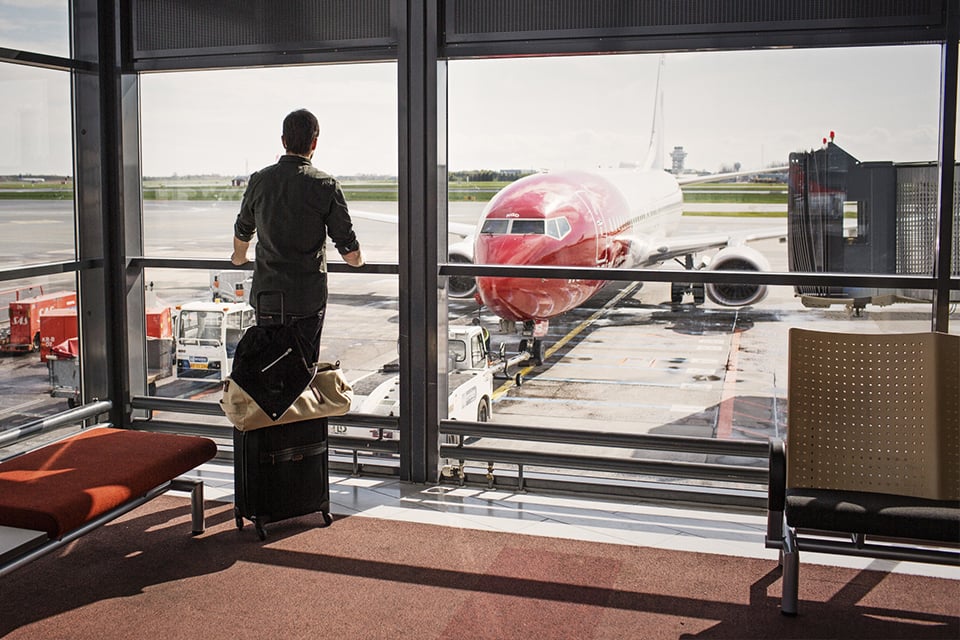 Norwegian
Norwegian 
Norwegian Air Shuttle ASA, trading as Norwegian is Norway's largest airline. It was founded in 1993 but only began operating as a low-cost carrier in 2002. The airline is known for its distinctive livery of white with a red nose, with portraits of high achievers on the tail fins of its aircraft.
The Norwegian brand expanded across the globe as the airline launched short-haul services across Europe and then entered the long-haul sector serving the US, Asia, and South America. Norwegian's route network focuses on connecting a broad range of domestic routes in Norway, across the Nordics and key European destinations. It offers a high-frequency domestic flight schedule within Scandinavia and Finland, and to business destinations such as London, as well as to holiday destinations in the Mediterranean and the Canary Islands. The airline offers new ancillaries that provide customers with greater choice and flexibility to allow them to travel at a cost and service level that suits their individual needs. Norwegian's flights are operated by itself as well as fully-owned subsidiaries, including Norwegian Air Sweden and Norwegian Air Norway.
In 2018 the company changed course to focus on core destinations and the right sizing of the airline in response to customer demand and global industry trends.
The rapid global spread of COVID-19 throughout 2020 and into 2021 accelerated this process and in January 2021 the company announced a simplified business structure and a dedicated short-haul-only network concentrating on a broad range of domestic routes in Norway, across the Nordics, and key European destinations.
Today, Norwegian Airlines still stands for excellent service and great value.
Sustainability is at the heart of everything that the airline does. Norwegian has one of the newest, fuel-efficient, and greenest fleets in Europe - about 100 aircraft that are Boeing 737-800s and 787 Dreamliners. The average age of its planes is only 3.6 years old. The airline uses brand new 787-9 Boeing Dreamliners for many of its long-haul flights, which are quieter and faster than many other aircraft used for overseas flights. Other Norwegian long-hauls are serviced by Boeing 737 Max aircraft. New aircraft are a win-win for passenger's comfort, the environment, keeping fares low and the company's costs.
Flying brings people together and is of great value to society. But flying also comes at a cost to the environment. At Norwegian travellers fly smart, with one of the newest fleets in the industry.
Norwegian low-cost business model reduces fuel and resource consumption – cutting both ticket prices and carbon emissions at the same time.
Norwegian was the first airline in the world to join the UN Climate Secretariat’s climate action initiative in 2019, pledging to work systematically to become carbon neutral by 2050.
Norwegian currently offsets over 40 % of total CO2 emissions through the EU Emission Trading System.
Norwegian uses the latest weather information from AVTECH which provides Norwegian pilots with advanced data, enabling them to optimize the flight paths for improved fuel efficiency reducing CO2 emissions.
In 2019 Norwegian implemented SkyBreathe which is another fuel and emission-reducing tool. The SkyBreathe application leverages Big Data algorithms developed through an EU-funded Clean Sky Project.
Norwegian aims to become the most carbon- and resource-efficient airline in the world by adopting new technology when it is commercially available.
Norwegian has an impressive track record of winning coveted customer awards worldwide from being voted for six consecutive years as Europe’s Best Low-Cost Airline by Skytrax to winning Airline Program of the Year Europe & Africa for the fourth consecutive year at the 2020 Freddie Awards.